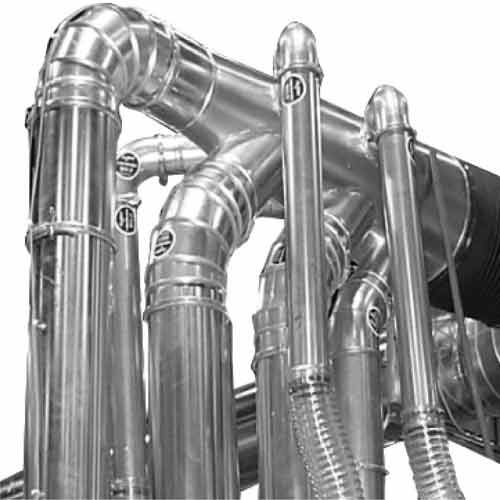Sizing Ductwork for Dust Collection Systems
Ductwork is the key component in moving air to your dust collector for filtration. Improperly sized ductwork can degrade collector performance & add production costs.
Ducting Needs to Efficiently Delivery Dirty Air to the Collector
The dust collector is the main ingredient in getting cleaner air for your shop, but if you can’t get the dirty air into the collector efficiently, you risk high energy usage, degraded collector performance, and unsafe conditions in the plant.

Factors Affecting Ductwork Sizing
Ductwork is used to carry the dirt and air from the collection point to the collector. It must be sized properly to create a “carrying velocity” to keep dirt moving through. Duct sizing is based on 2 variables: the particulate being collected and the volume of air being moved. The heavier the dirt, the higher the air velocity needed.
Example
Sizing ductwork depends on many factors
When it comes to dust collectors, a one-size-fits-all approach seldom meets the specific needs of each customer. Can your supplier provide the features you need for your situation? In many cases, space constraints on height or footprint drive the need for collector customization. Will the dust collector supplier be able to incorporate ancillary items such as discharge devices, monitoring equipment, or fire and explosion mitigation equipment? Can they provide special coatings or modify the collector to provide special pressure ratings if needed? How often does the supplier provide these types of modifications? And are they willing to help with advice on such options and accessories?
Steel grinding dust conveyed @ 3500 feet per minute (velocity). A typical grinder uses 500 cubic feet of air per minute (cfm) to control dust. To move this much air, select an appropriate size of ductwork – in this example, a 5-inch diameter duct yields just over 3500 feet per minute for 500 cfm air volume.
If the ductwork is too small, two problems can occur:
- Higher pressure loss (delta P) and higher energy usage because of higher velocity.
- Increase delta P will reduce air volume entering the collection hood, degrading the performance of the dust collector.
If the ductwork is too large, two problems may happen:
- If the volume of air is not increased, dirt will not be carried through the ductwork and material will collect inside.
- If the particulate is heavy, the ductwork will become heavier than the structure support can carry and may crash to the floor.
Summary
Correct sizing of the ductwork is a key factor in the dust collection system.

AST Canada has been helping clients find solutions for their unique Dust, Mist & Fume Collection needs for more than 40 years.
We can help you too.
